€2.00
Experience the Monastery’s beauty through an artistic lens. Includes physical delivery of a printed postcard
Lisboa’s Monasterio de los Jeronimos: UNESCO World Heritage Site with Manuelino Style, Vasco da Gama, Luís de Camões, and the Famous Pastéis de Belém
If you’re planning a trip to Portugal, be sure to include a visit to Lisbon, the country’s capital. This vibrant city is known for its stunning architecture, rich history, and delicious food. One must-see attraction in Lisbon is the Monasterio de Los Jeronimos, a UNESCO World Heritage Site that dates back to the 15th century.
The Monasterio de Los Jeronimos is a stunning example of Manuelino, a unique Portuguese architectural style that features intricate stonework, maritime motifs, and ornate details. Inside the monastery, you’ll find the tombs of Vasco da Gama, the famous explorer who discovered a sea route to India, and Luís de Camões, a notable poet. After exploring the monastery, be sure to stop by the nearby Pastéis de Belém, where you can sample the famous Pastéis de Nata, a sweet treat that’s a must-try when visiting Portugal.
Key Takeaways
- Lisbon is a vibrant city known for its stunning architecture, rich history, and delicious food.
- The Monasterio de Los Jeronimos is a UNESCO World Heritage Site that showcases the unique Manuelino architectural style and features the tombs of Vasco da Gama and Luís de Camões.
- Be sure to stop by Pastéis de Belém to try the famous Pastéis de Nata, a sweet treat that’s a must-try when visiting Portugal.
Lisboa: The Capital of Portugal
Lisboa, also known as Lisbon, is the capital and largest city of Portugal. It is a vibrant and historic city that has been shaped by its location on the Tagus River and its rich cultural heritage.
One of the most famous landmarks in Lisboa is the Monastery of the Hieronymites, also known as the Jerónimos Monastery. This magnificent monastery was built in the late 15th century and is a prime example of the Manueline style of architecture. It was commissioned by King Manuel I of Portugal to celebrate the return of Vasco da Gama from his voyage to India. The monastery is now a UNESCO World Heritage Site and is open to visitors.
Another famous figure associated with Lisboa is the poet Luís de Camões, who wrote the epic poem “The Lusiads”. This poem is considered one of the greatest works of Portuguese literature and celebrates the country’s maritime history and discoveries.
If you have a sweet tooth, then you must try the famous Pastéis de Belém, a delicious pastry that is a must-try when visiting Lisboa. These pastries are made from a secret recipe that has been passed down through generations and are only available at the Antiga Confeitaria de Belém.
Lisboa is a city that has something for everyone, from its rich history and culture to its vibrant nightlife and delicious food. Whether you are exploring its historic streets or enjoying a sunset over the Tagus River, Lisboa is a city that will capture your heart and leave you wanting more.
Monasterio de Los Jeronimos: A UNESCO World Heritage Site
If you’re visiting Lisbon, then you must visit the Monasterio de Los Jeronimos, which is one of the most popular tourist attractions in the city. The monastery is a UNESCO World Heritage Site and is located in the Belem district of Lisbon. It is a beautiful example of Manueline architecture, which is a Portuguese style that is characterized by intricate and ornate decorations.
The monastery was built in the 16th century and was commissioned by King Manuel I. It was built to commemorate the return of Vasco da Gama from his voyage to India. The monastery is also closely associated with the famous Portuguese poet, Luís de Camões, who is said to have prayed here before embarking on his journey to the East.
One of the most impressive features of the monastery is the beautiful cloister, which is considered to be one of the finest examples of Manueline architecture in Portugal. The cloister is decorated with intricate carvings and sculptures, and it is a wonderful place to relax and take in the beauty of the monastery.
Another must-see attraction at the monastery is the tomb of Vasco da Gama, which is located in the church. The tomb is a beautiful example of Renaissance art and is a fitting tribute to one of Portugal’s most famous explorers.
After visiting the monastery, you should also make sure to try some of the famous Pastéis de Belém, which are a type of Portuguese custard tart. These delicious treats are made using a secret recipe that has been passed down for generations, and they are only available at the Pastéis de Belém bakery, which is located near the monastery.
In conclusion, the Monasterio de Los Jeronimos is a must-visit attraction for anyone visiting Lisbon. It is a beautiful example of Manueline architecture, and it is closely associated with some of Portugal’s most famous historical figures. So, make sure to add it to your itinerary and enjoy all that it has to offer.
Manuelino: The Portuguese Architectural Style
If you are planning a trip to Lisbon, you will undoubtedly come across the term “Manuelino” when visiting some of the city’s most iconic landmarks, such as the Jerónimos Monastery and the Belém Tower. But what is Manuelino, and why is it so important to Portugal’s cultural heritage?
Manuelino is a unique architectural style that emerged in Portugal during the reign of King Manuel I in the early 16th century. It is characterized by intricate, ornate decoration that incorporates maritime motifs and symbols of Portugal’s Age of Discovery, such as sea monsters, ropes, and shells.
The style takes its name from King Manuel I, who was a great patron of the arts and sponsored many of the buildings that feature Manuelino decoration. Perhaps the most famous example of Manuelino architecture is the Jerónimos Monastery, which was built in the late 15th century and extensively renovated in the Manuelino style in the early 16th century.
One of the key features of Manuelino decoration is its use of naturalistic elements, such as leaves, flowers, and fruit, which are often combined with maritime motifs to create a unique and highly decorative style. The style was also heavily influenced by the Gothic style that was popular in Europe at the time, but Manuelino architects added their own unique Portuguese twist to the Gothic motifs they used.
If you are interested in learning more about Manuelino architecture, there are many other buildings in Lisbon that feature this unique style, such as the Belém Tower, the Church of São Roque, and the Palace of the Marquises of Fronteira. And if you want to sample some of the delicious treats that Lisbon is famous for, be sure to try the Pastéis de Belém, a traditional Portuguese pastry that has been made in Lisbon since 1837 and is still made according to a secret recipe today.
Vasco da Gama: The Famous Explorer
If you’re interested in history and exploration, you’ve probably heard of Vasco da Gama. He was a Portuguese explorer who is best known for his role in opening up a direct sea route from Europe to India. His voyages were a significant milestone in the Age of Discovery and had a profound impact on world history.
Da Gama was born in Sines, Portugal, in 1469. He came from a noble family and was well-educated. In 1497, he was chosen by King Manuel I of Portugal to lead an expedition to find a sea route to India. At the time, the Portuguese were interested in establishing trade relations with India and breaking the Italian monopoly on the spice trade.
Da Gama set sail from Lisbon in July 1497 with a fleet of four ships. He sailed down the western coast of Africa, rounding the Cape of Good Hope and entering the Indian Ocean. After a long and difficult journey, he arrived in Calicut, India, in May 1498. His arrival in India marked the beginning of a new era of trade and interaction between Europe and Asia.
Da Gama made two more voyages to India, in 1502-1503 and 1524. He was appointed as the Governor of Portuguese India in 1524, but he died shortly after arriving in India. Despite his short life, da Gama’s voyages had a lasting impact on world history. His exploration of the sea route to India paved the way for European colonialism in Asia and Africa.
Today, da Gama is remembered as a national hero in Portugal. His tomb is located in the Jerónimos Monastery in Lisbon, a UNESCO World Heritage site that is one of the finest examples of Manueline architecture. The monastery is also the final resting place of the poet Luís de Camões, who wrote the epic poem “The Lusiads,” which celebrates da Gama’s voyages.
If you’re visiting Lisbon, be sure to try the famous Pastéis de Belém, a delicious pastry that is a local specialty. These custard tarts are said to have originated in the Jerónimos Monastery, where they were made by the monks. They’re a tasty reminder of the rich history and culture of this fascinating city.
Luís de Camões: The Notable Poet
If you are interested in Portuguese literature, you must have heard of Luís de Camões. He is considered one of the greatest poets in the Portuguese language. Camões was born in Lisbon around 1524 or 1525 and died on June 10, 1580. He lived during the reign of King Manuel I and King John III, and his life was marked by many adventures, including his participation in the Portuguese military campaigns in Africa and Asia.
Camões is best known for his epic poem, Os Lusíadas, which is considered the national epic of Portugal. The poem tells the story of Vasco da Gama’s discovery of the sea route to India and celebrates the heroic deeds of the Portuguese people. The poem is written in a style known as “manuelino,” which is characterized by ornate, intricate, and highly decorative motifs.
In addition to Os Lusíadas, Camões wrote many other poems, including sonnets, odes, elegies, and eclogues. His poetry is known for its lyrical beauty, its philosophical depth, and its profound humanism. Camões was a master of the Portuguese language, and his poetry is still widely read and studied today.
If you visit Lisbon, you can see many monuments and landmarks dedicated to Camões. One of the most famous is the statue of Camões in the Chiado district, which was erected in the late 19th century. You can also visit the Monastery of Jerónimos, which is a UNESCO World Heritage Site and was built during the reign of King Manuel I. The monastery is a masterpiece of the manuelino style and is dedicated to the memory of Vasco da Gama, who is buried there. Camões is also honored in the monastery, and his tomb is located in the church.
If you want to experience a taste of Lisbon’s culinary culture, you must try the famous Pastéis de Belém. These are custard tarts that are made with a secret recipe that dates back to the 19th century. The recipe was created by the monks of the Jerónimos Monastery, and it is still used today by the famous Pastéis de Belém bakery. The tarts are crispy on the outside and creamy on the inside, and they are a true delight for the senses. In Portugal, these tarts are known as Pastéis de nata, and they are a national treasure.
Pastéis de Belém: A Unique Delicacy
If you want to taste one of the most iconic Portuguese desserts, you must try Pastéis de Belém. These small custard tarts are a must-try when visiting Lisbon, and they have a long history dating back to the 19th century.
The recipe for Pastéis de Belém has been kept secret for over 180 years, and it is only known by a few people. The tarts are made with a crispy pastry crust and a creamy custard filling, with a hint of cinnamon and vanilla. They are best served warm and sprinkled with powdered sugar and cinnamon.
You can find Pastéis de Belém in many bakeries across Lisbon, but the original recipe is only available at the Antiga Confeitaria de Belém, located in the neighbourhood of Belém. This bakery has been making the tarts since 1837, following an ancient recipe from the Mosteiro dos Jerónimos.
The bakery is always busy, and you may have to queue to get your hands on these delicious tarts. However, the wait is worth it, as the tarts are freshly baked and served straight out of the oven.
If you want to learn more about the history of Pastéis de Belém, you can visit the Antiga Confeitaria de Belém and take a guided tour of the bakery. You will learn about the process of making the tarts and the history of the bakery, which has become a symbol of Portuguese culinary heritage.
In conclusion, Pastéis de Belém is a unique delicacy that you must try when visiting Lisbon. These small custard tarts are a testament to Portuguese culinary tradition and are a must-try for anyone with a sweet tooth.
Frequently Asked Questions
What is the significance of Monastery of Jeronimos in Lisbon’s history?
The Monastery of Jeronimos is a symbol of Portugal’s power and wealth during the Age of Discovery. Built in the 16th century, it was a place of prayer for sailors and explorers before they embarked on their voyages. The monastery also served as a royal burial place and a site for important state ceremonies.
How can I purchase tickets for Monastery of Jeronimos online?
You can purchase tickets for the Monastery of Jeronimos online through the official website of the Monastery or through third-party ticket providers. It is recommended to book your tickets in advance to avoid long queues and waiting times.
What is the UNESCO World Heritage status of Monastery of Jeronimos?
The Monastery of Jeronimos is a UNESCO World Heritage site, recognised for its cultural and historical significance. It was inscribed on the list in 1983, along with the nearby Tower of Belem. The UNESCO website describes the Monastery as “the most prominent example of the Portuguese late Gothic Manueline style of architecture.”
What is the Manueline style of architecture and how is it reflected in Monastery of Jeronimos?
The Manueline style is a form of late Gothic architecture that developed in Portugal during the reign of King Manuel I (1495-1521). It is characterised by ornate decoration, intricate stonework, and maritime motifs, reflecting Portugal’s maritime power and exploration during the Age of Discovery. The Monastery of Jeronimos is considered one of the finest examples of Manueline architecture, with its elaborate stonework, vaulted ceilings, and maritime motifs.
Who was Vasco da Gama and what is his connection to Monastery of Jeronimos?
Vasco da Gama was a Portuguese explorer who led the first European expedition to reach India by sea. He departed from Lisbon in 1497 and returned in 1499, having established a sea route to India. He is buried in the Monastery of Jeronimos, along with other important figures in Portuguese history.
What is the history behind Luís de Camões and his connection to Pastéis de Belém?
Luís de Camões was a 16th-century Portuguese poet who wrote the epic poem “The Lusiads,” which celebrates Portugal’s maritime achievements and explores themes of love, courage, and destiny. The poem is closely associated with the Monastery of Jeronimos and is considered a masterpiece of Portuguese literature. Pastéis de Belém, a type of custard tart, is said to have been created by the monks of the Monastery in the 18th century. Today, the Pastéis de Belém bakery near the Monastery is famous for its delicious custard tarts, which are a must-try for visitors to Lisbon.

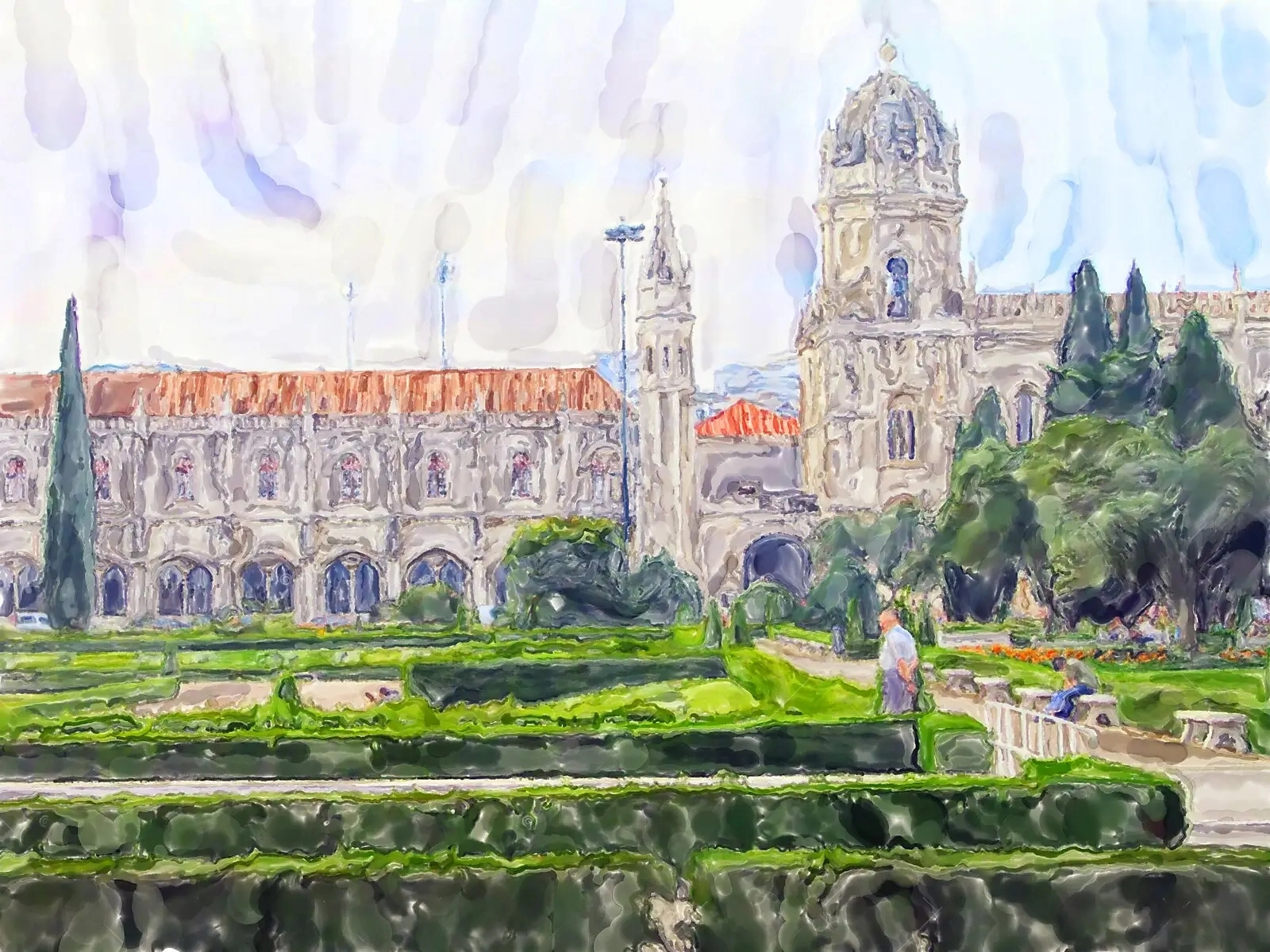
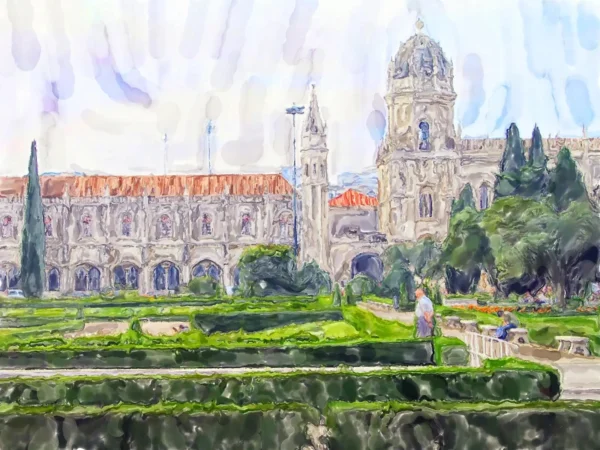
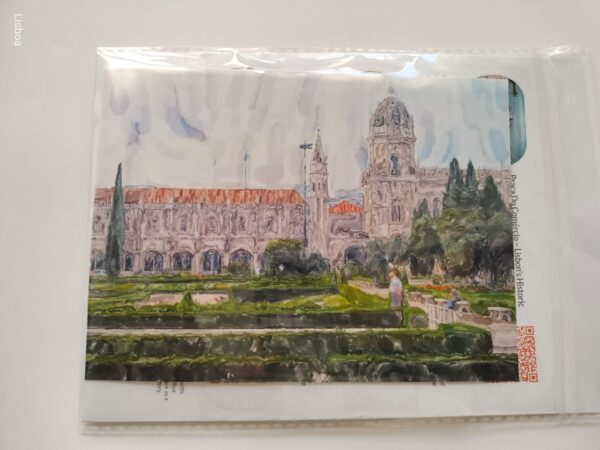
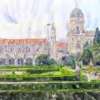
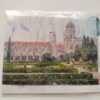


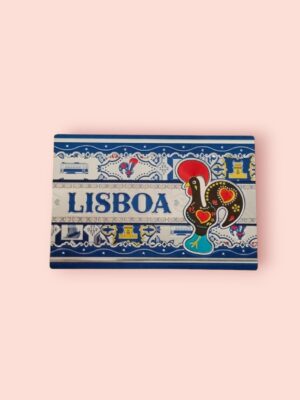
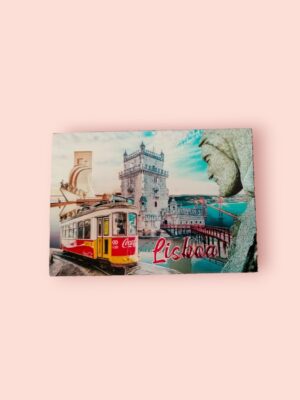
Reviews
There are no reviews yet.